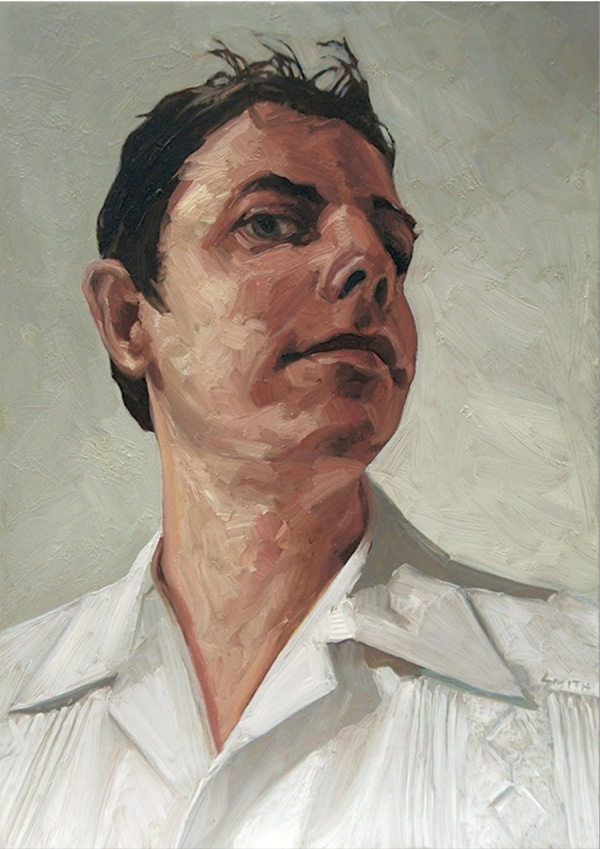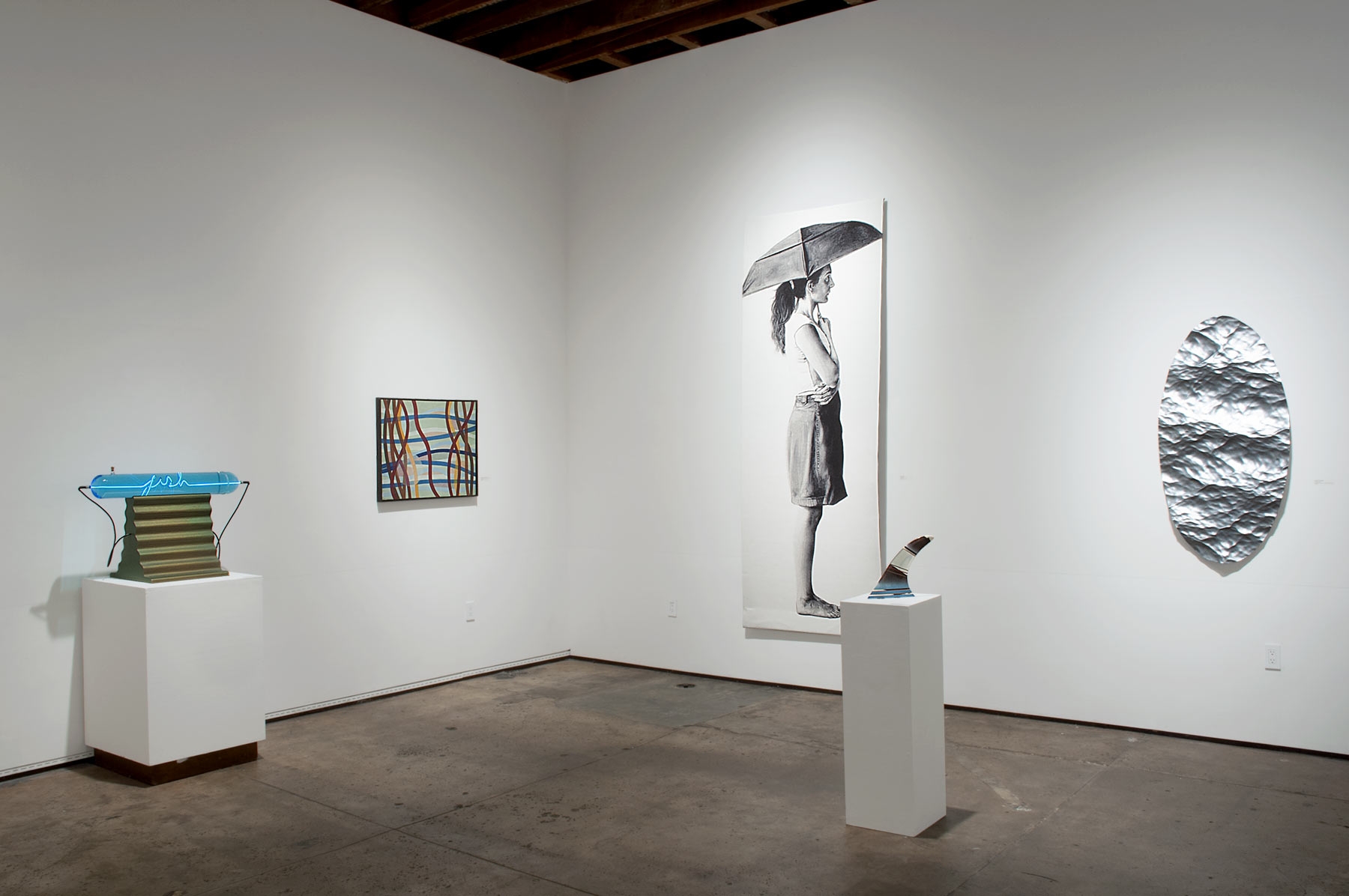It’s a mystery almost as old as the pyramids.
How do artists get gallery representation?

Oh, grasshopper, if I could share the secret of getting gallery representation, I would. Promise. I don’t keep things from you.
3 Things You Can Bet On
There is no secret to getting gallery representation because there is no single way that artists enter gallery stables.
Three things are for certain.
1. You don’t make a few pieces and then start approaching galleries.
That move has amateur written all over it.
2. It will take time, which will test your commitment.
Artists new to the market don’t like to hear that it’s a long process that you must be invested in. Surely there must be a shortcut. A hidden door.
Surely. Not.
3. Bolstering your relationships with other gallery artists will dramatically increase your chances of getting gallery representation.
You don’t need to believe me. Listen to gallery director Jeremy Tessmer in this episode of The Art Biz podcast.
You’ll hear how Jeremy views an artist’s professionalism, what he thinks of online platforms, and how he taught himself art history (and why that was important to him).
Jeremy describes Sullivan Goss as an on-ramp for collectors and artists—one that connects their roster of local, regional, national, and international artists. You’ll hear him discuss 3 qualities that he looks for in artists, two of which are non-negotiable, and how he views the artists in his gallery as a family. He says that “dealers should have some sense of responsibility for the well-being of their artists.”
Grab a cup of tea or coffee and enjoy this conversation with Jeremy Tessmer.
Highlights
- The niche that the Sullivan Goss Gallery fills and Jeremy’s role within it. (2:37)
- Sullivan Goss is an on-ramp gallery with the aim of expanding the art world. (7:49)
- The different art worlds need to become more aware of each other. (10:05)
- Jeremy’s journey from writer and tech specialist to art gallerist. (14:04)
- Is it important for artists to be steeped in art history? (23:34)
- Overcoming the anxiety of influence to connect with other artists. (26:21)
- The 3 qualities Jeremy looks for in the artists he represents. (33:30)
- The responsibility a gallery has for nurturing its artists’ careers. (36:10)
- The value of understanding the long game and defining your real interest in an artist’s career. (41:11)
- Things an artist should never say or do to gain the attention of a gallerist. (46:18)

Jeremy Tessmer Quotes
- “All of us need each other, and need to be helping people find their way and expanding the art world.”
- “Artists think that everyone is as interested in sight as they are, and that’s just not the case at all.”
- “Ultimately it’s really critical that you have your own voice.”
- “One of the biggest thrills in the art world is connecting to another human being.”
- “I think dealers should have some sense of responsibility for the wellbeing of their artists.”
- “The secret door into every gallery is the other artists who already show in the gallery.”
Related Episodes
How Mary Erickson keeps up with 8 different galleries that represent her work.
Why Ali Cavanaugh pulled her work from 10 galleries and took a U-turn in her career.
Why Adele Sypesteyn decided to work outside the gallery system.
How Mai Wyn Schantz partnered with a gallery for a successful pop-up show.
About My Guest
Jeremy Tessmer is the Gallery Director and Curator of vintage American art at Sullivan Goss. He has been with the firm almost 20 years, working in every area of the business, including: curation, sales, marketing, and design of everything from exhibition spaces to internal databases and processes. He has special knowledge of the American Modern movement, especially as it occurred on the West Coast. He has also been heavily involved with the gallery’s publication program, helping to produce nineteen books and numerous catalogs, including those on local artists Ray Strong and Hank Pitcher.
Follow Jeremy on Instagram: @jeremyarts
Follow Sullivan Goss on Instagram: @sullivangoss




19 thoughts on “Qualities Galleries Are Looking For in Their Artists with Jeremy Tessmer (ep. 123)”
I could listen to him for another three hours too!!!
I’ll pass on that information. 😇
I. listened to this on an early morning walk today – and it was wonderfully entertaining and enlightening. Since I was walking, I wasn’t able to take notes – so I really appreciate the recap you gave. I had to laugh when he said the things never to say to a gallery, like my work is just like this work. Yes, it is important to find your OWN voice and he said it very well.
Very insightful, I enjoyed listening to your conversation with Jeremy. I agree that the recommendation of other artists is one of the best ways to be introduced to a gallery and gallerist you might want to show with.
Thank you for sharing your experience and wisdom on this subject.
Thanks for listening, Joan! As I said, I could have talked with Jeremy for hours longer.
I really enjoyed this episode! It’s filled with so much information, but more than that, it’s a great conversation. I wonder where else you’d go if you did talk for 3 more hours, I’d be listening.
Kristen: Right?! I had a ton of questions that we didn’t get to, but what he had to share was so much more interesting. Thanks for listening.
Great interview,; what an interesting and thoughtful person, with a compelling background. Thanks for sharing this!
You’re welcome, Andrea. I’m so happy you got a chance to listen.
Great conversation, and I love Sullivan Goss! I’m lucky that it’s just an hour north of where I live. Thank you, Alyson. This was both entertaining and informative.
Lucky you to be so close, Cassandra.
My favorite podcast of yours!
Yay! What was your favorite part, Jeanne?
I was thinking some more about what Jeremy said about how he finds new artists, and that he takes seriously recommendations from the artists he already represents. The implication for those of us who are artists is that it’s who you know, and not the quality of your work. And doesn’t that lead to what we’ve seen historically — an “Old Boy’s Network?”
Cassandra: I guess you could read it that way, but I think it’s just a reflection of the way life is. We pay attention to the people we know and like. We trust their judgment. To me, it’s like if you were looking for a plumber. When many of them are so similar, (as, let’s face it, many artists are) I’m probably going to pay attention to the one my neighbor recommended. I could take an artist at face value. “I love that work.” But hearing that other people like working with that artist puts it on another level for me.
Such timely reminders! Fantastic podcast Alyson, I too could have been very happy to listen for another 2 hours.
Sarah: I’ll see if I can get him back again in the future. I know he’ll appreciate hearing from you.
This is my favorite episode ever! Thank you , Allyson Stanfield and Jeremy Tessmer for discussing art, art history, the nature of art galleries and the long game of an artist’s career. I especially liked his phrase ““One of the biggest thrills in the art world is connecting to another human being.” This sums up exactly how I feel. My own art strives to connect with people and is not a success unless the it touches the heart of the viewer. How refreshing it was to hear Jeremy talk about this topic!
Thank you , Jeremy and Allyson, for sharing your lives, knowledge and wisdom.
Should you decide to both work together again, I will be listening!
I absolutely would listen to you two for 3 more hours– really interesting episodes-I would love to see an Alyson Stanfield art history club
The story about the wind throwing her catalog down — there could be a movie just about such bad behavior…I actually read something online your other day that talked about how artists can get gallery representation by taking their work or portfolios into gallery and I wondered on what planet the writer of that came from to think that was a good idea
I really loved how there was a bigger picture woven into this they see their roll in the art world and people’s lives that goes beyond immediate transactions